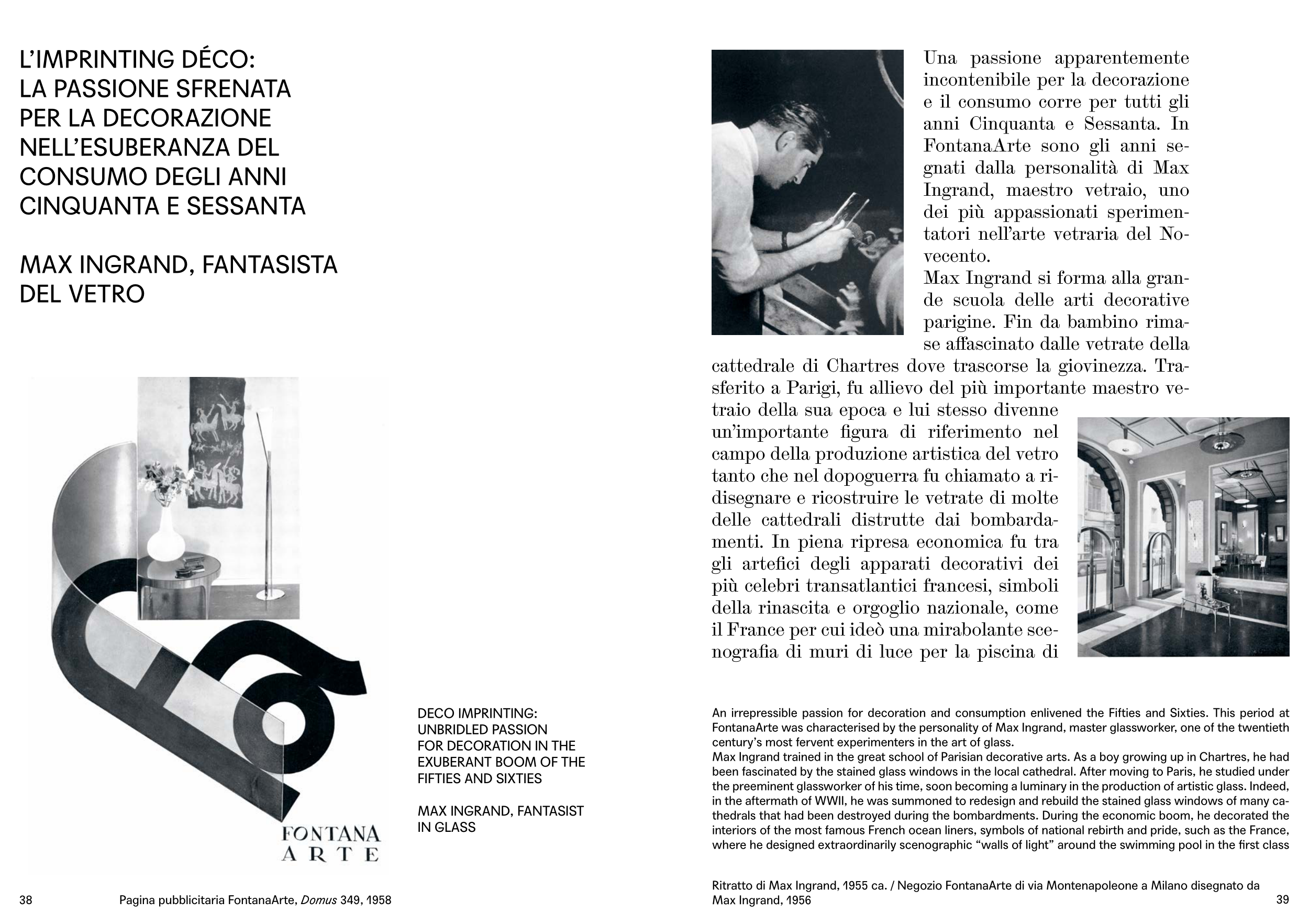38
39
L’IMPRINTING DÉCO:
LA PASSIONE SFRENATA
PER LA DECORAZIONE
NELL’ESUBERANZA DEL
CONSUMO DEGLI ANNI
CINQUANTA E SESSANTA
MAX INGRAND, FANTASISTA
DEL VETRO
DECO IMPRINTING:
UNBRIDLED PASSION
FOR DECORATION IN THE
EXUBERANT BOOM OF THE
FIFTIES AND SIXTIES
MAX INGRAND, FANTASIST
IN GLASS
Pagina pubblicitaria FontanaArte, Domus 349, 1958
Una passione apparentemente
incontenibile per la decorazione
e il consumo corre per tutti gli
anni Cinquanta e Sessanta. In
FontanaArte sono gli anni se-
gnati dalla personalità di Max
Ingrand, maestro vetraio, uno
dei più appassionati sperimen-
tatori nell’arte vetraria del No-
vecento.
Max Ingrand si forma alla gran-
de scuola delle arti decorative
parigine. Fin da bambino rima-
se affascinato dalle vetrate della
cattedrale di Chartres dove trascorse la giovinezza. Tra-
sferito a Parigi, fu allievo del più importante maestro ve-
traio della sua epoca e lui stesso divenne
un’importante figura di riferimento nel
campo della produzione artistica del vetro
tanto che nel dopoguerra fu chiamato a ri-
disegnare e ricostruire le vetrate di molte
delle cattedrali distrutte dai bombarda-
menti. In piena ripresa economica fu tra
gli artefici degli apparati decorativi dei
più celebri transatlantici francesi, simboli
della rinascita e orgoglio nazionale, come
il France per cui ideò una mirabolante sce-
nografia di muri di luce per la piscina di
Ritratto di Max Ingrand, 1955 ca. / Negozio FontanaArte di via Montenapoleone a Milano disegnato da
Max Ingrand, 1956
An irrepressible passion for decoration and consumption enlivened the Fifties and Sixties. This period at
FontanaArte was characterised by the personality of Max Ingrand, master glassworker, one of the twentieth
century’s most fervent experimenters in the art of glass.
Max Ingrand trained in the great school of Parisian decorative arts. As a boy growing up in Chartres, he had
been fascinated by the stained glass windows in the local cathedral. After moving to Paris, he studied under
the preeminent glassworker of his time, soon becoming a luminary in the production of artistic glass. Indeed,
in the aftermath of WWII, he was summoned to redesign and rebuild the stained glass windows of many ca-
thedrals that had been destroyed during the bombardments. During the economic boom, he decorated the
interiors of the most famous French ocean liners, symbols of national rebirth and pride, such as the France,
where he designed extraordinarily scenographic “walls of light” around the swimming pool in the first class


